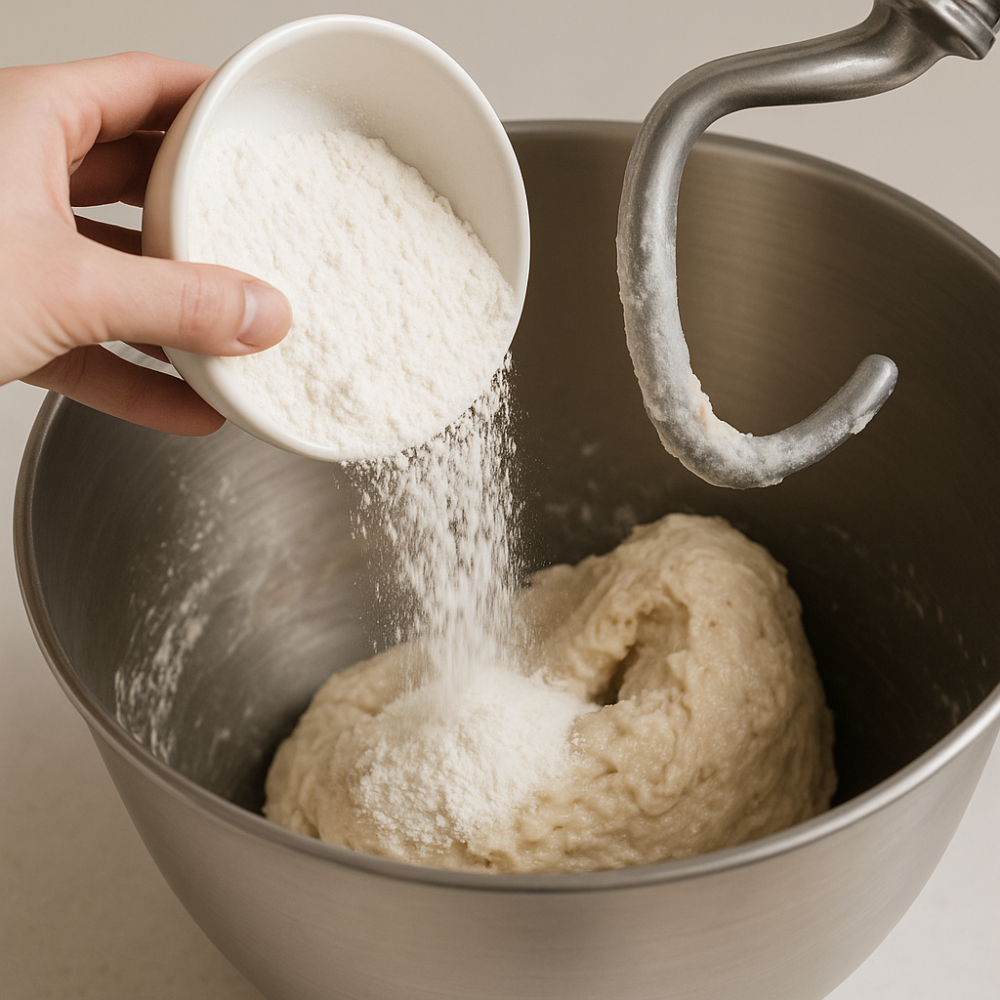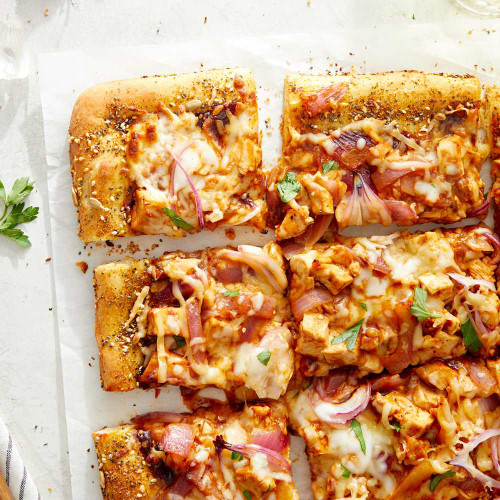
Key Ingredients: Emulsifiers (Monoacylglycerols/SSL/DATEM) + Enzymes (Xylanase)
Mechanism
Analogy
Emulsifiers trap free water: They compete with starch and proteins to bind water molecules, reducing surface moisture.
Like applying a "waterproof coating" to the dough.
Xylanase breaks down bran fibers: Hydrolyzes pentosans in flour, lowering water absorption and eliminating stickiness caused by bran.
Like removing a "sponge" that traps excess water.

Key Ingredients: Reducing Agents (L-Cysteine) + Oxidizing Agents (Ascorbic Acid, VC)
Ingredient
Mechanism
Effect
L-Cysteine
Cleaves disulfide bonds (-S-S-) in gluten, temporarily softening the network.
Dough stretches like chewing gum without breaking.
Ascorbic Acid (VC)
Reforms disulfide bonds during mixing, strengthening gluten.
Dough rebounds after stretching, holding its shape.
Key Ingredients: Oxidizing Agents (VC/Potassium Bromate) + Thickeners (Guar Gum)
Ingredient
Mechanism
Mechanism Protection Against Mixing Damage
Oxidizing Agents
Accelerate gluten cross-linking, forming a dense network.
Resists tearing from mixing hooks, maintaining gluten integrity.
Guar Gum
Forms a viscoelastic gel with water, filling gaps in the gluten network.
Cushions mechanical stress, reducing structural damage.

Name: Jack
Mobile:0086 13867199735
Tel:0086 571 22661887
Whatsapp:8613867199735
Email:info@hz-great.com
Add:Nanyang Development Area, Xiaoshan Dist, Hangzhou City, Zhejiang Province, China